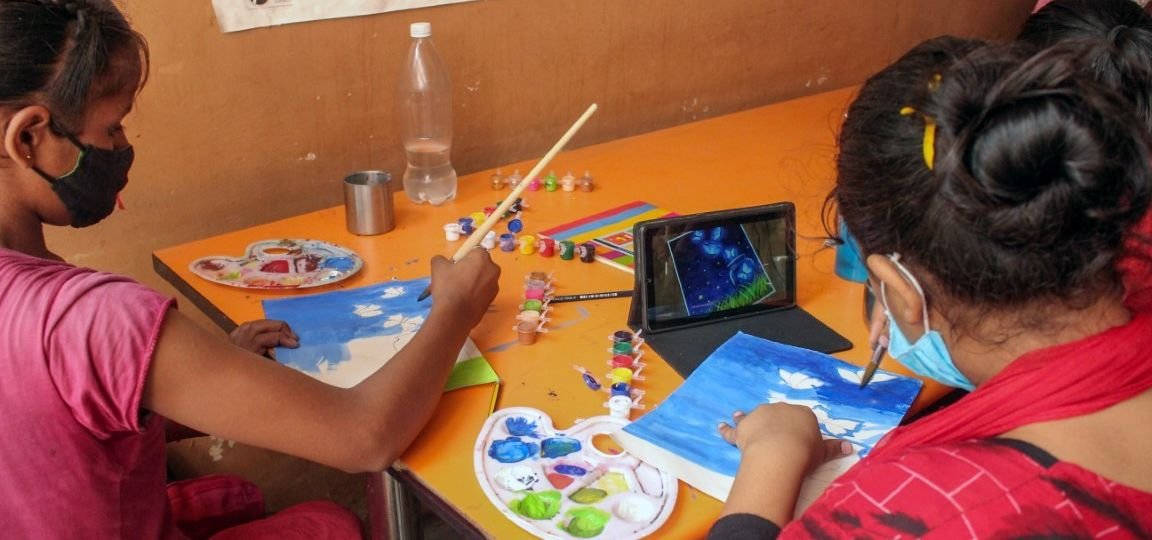
Childhood trauma, particularly that caused by sexual and gender-based violence, can have a lasting impact on a child’s mental and emotional well-being. It can be difficult for survivors to process and overcome their experiences, leaving them feeling stuck in a cycle of pain and suffering. However, there is hope for healing and one powerful tool that can aid in this journey is art therapy.
Arts as therapy is a form of psychotherapy that uses art as a medium for self-expression and communication. It is a way for survivors of childhood trauma to process and make sense of their experiences in a safe and non-threatening environment. Through art, survivors can express their emotions and feelings in a way that words may not be able to convey. It can also provide a sense of empowerment and control, allowing them to take an active role in their own healing process.
Arts as therapy can also serve as a form of support for very young child survivors. The arts educator trained in counselling necessarily understands how to work with children in difficult settings, as well as other survivors in group therapy, and can provide a sense of validation and understanding, creating a brave space for healing. Additionally, the therapist educator can provide guidance and insight into the survivors’ art, helping them to understand and work through their experiences. It’s extremely critical to note that not all psychologists can work with the process of arts as therapy for a child in crisis settings. It requires contextual training and a practitioner lens as much as that of training in creative arts process and guided counselling modalities.
Arts as therapy can also be used as an advocacy tool. By sharing their art and stories, survivors can raise awareness about the issue of childhood trauma caused by sexual and gender-based violence, and advocate for their rights and needs. It can also be used in rehabilitation to help survivors move forward in their lives and build self-esteem and self-confidence.
It’s important to note that arts as therapy is not a standalone solution for healing from childhood trauma, it’s a complementary process route that should be used in conjunction with other forms of support and advocacy.
Arts as therapy can play a powerful role in the healing journey of survivors of childhood trauma caused by sexual and gender-based violence. It provides a means of self-expression, support, empowerment, advocacy, and rehabilitation. It’s a valuable tool that can aid in the healing process and help child and adolescent survivors move forward in their lives.

